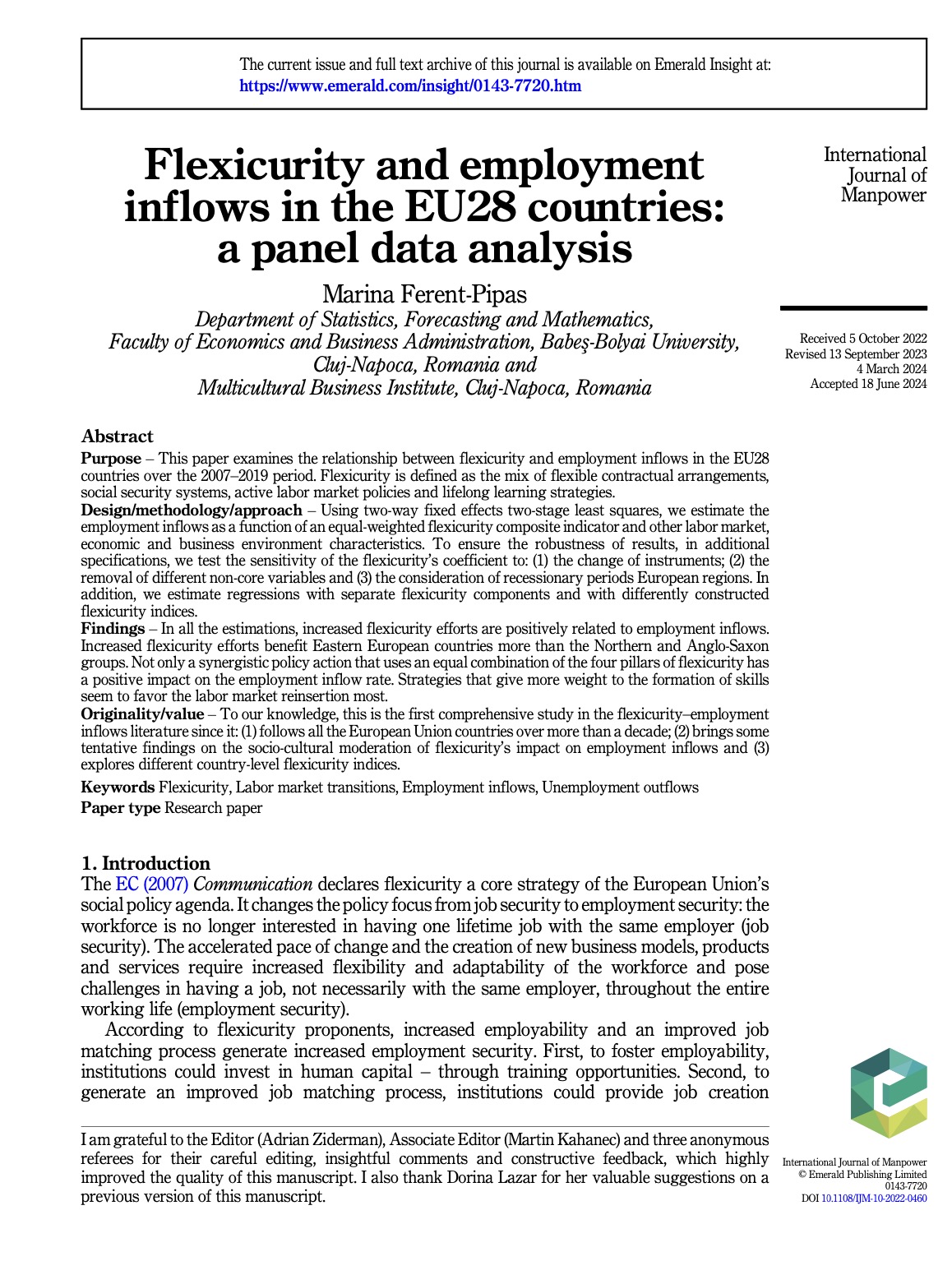|
|
|
Ferent-Pipas, M. (2024) International Journal of Manpower [Core Economics, Q2]
Autor:
Cristina Alexandrina Stefanescu
Publicat:
24 Iulie 2024
Ferent-Pipas, M. (2024) Flexicurity and employment inflows in the EU28 countries: a panel data analysis. International Journal of Manpower, 45(8), 1589-1606.
DOI: https://doi.org/10.1108/IJM-10-2022-0460
✓ Publisher: Emerald
✓ Categories: Management; Industrial Relations & Labor
✓ Article Influence Score (AIS): 0.844 (2023) / Q2 in all categories.
Abstract: This paper examines the relationship between flexicurity and employment inflows in the EU28 countries over the 2007–2019 period. Flexicurity is defined as the mix of flexible contractual arrangements, social security systems, active labor market policies and lifelong learning strategies. Using two-way fixed effects two-stage least squares, we estimate the employment inflows as a function of an equal-weighted flexicurity composite indicator and other labor market, economic and business environment characteristics. To ensure the robustness of results, in additional specifications, we test the sensitivity of the flexicurity’s coefficient to: (1) the change of instruments; (2) the removal of different non-core variables and (3) the consideration of recessionary periods European regions. In addition, we estimate regressions with separate flexicurity components and with differently constructed flexicurity indices. In all the estimations, increased flexicurity efforts are positively related to employment inflows. Increased flexicurity efforts benefit Eastern European countries more than the Northern and Anglo-Saxon groups. Not only a synergistic policy action that uses an equal combination of the four pillars of flexicurity has a positive impact on the employment inflow rate. Strategies that give more weight to the formation of skills seem to favor the labor market reinsertion most. To our knowledge, this is the first comprehensive study in the flexicurity–employment inflows literature since it: (1) follows all the European Union countries over more than a decade; (2) brings some tentative findings on the socio-cultural moderation of flexicurity’s impact on employment inflows and (3) explores different country-level flexicurity indices.

inapoi la stiri  vezi evenimentele
vezi evenimentele  home
home 
|